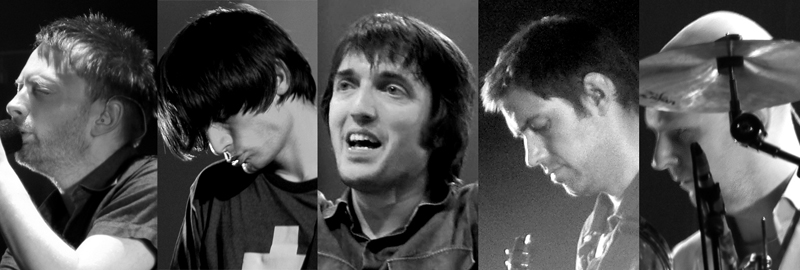Innovation often comes from unexpected sources.
Take the humble music cassette. How many romances were fuelled by a mix-tape? How many teens crouched over their stereos – fingers poised over the Play-Record buttons – to bag their favourite tunes from the radio?
But when consumers started to switch to CDs in the early 1990s, cassette manufacturers were left with factories, machinery and raw materials they couldn’t use.
Until, one day, a smart engineer realised those coils of magnetic tape would make great batteries: small, portable, powerful batteries.
The lithium-ion battery you’ll find in today’s smartphones and mobile devices was born.
The same rule about innovation applies to driverless cars.
You can trace origins, connections and applications of technology now being used by driverless car developers to unexpected places: from Radiohead to Pong.
Radiohead’s House of Cards video
Skip back a decade and you’ll find the maestros of musical melancholy using LIDAR technology in the video accompanying their single, House of Cards.
So, what is LIDAR – Light Detection and Ranging? Just think radar but with lasers. LIDAR was invented in the 1960s and was first used by meteorologists to map cloud patterns, then by Nasa’s Apollo astronauts to map the surface of the moon. But watch Radiohead’s video and you’ll get the idea of how many driverless cars “see”, map the landscape around them and road ahead.
Optics and cameras
Not every company investing in driverless cars is using LIDAR, though. Elon Musk, the founder of PayPal, SpaceX and Tesla, thinks the future lies in the evolution of far older – and cheaper – tech: the lens and camera.
Traditionally, a camera lens “looks but cannot see” unlike a human eye. Cameras capture images but they don’t interpret them. But the human eye can sense distance, depth, shape, colours all in an instant. But have you noticed HDR images appearing among the photos on your smartphone?
These “high dynamic range” images attempt to replicate how the human eye deals with the differing depths of light. The result is sharper, more clearly defined, realistic images.
The same principle is at work on the camera and lens arrays on driverless cars. The question is: how close can those arrays get to matching the performance of the human eye?
Pong
Now, you’re thinking … the human eye is just a ball of mush without an optic nerve connected to a brain. That’s true. So, the camera arrays on driverless cars will only be as good as the artificial intelligence (AI) they’re connected to. The challenge for AI is how to deal with the unexpected and unforeseen rather than just following what’s been programmed.
So, one of the foremost companies in artificial intelligence, DeepMind, has been developing systems that can learn for themselves. How are they learning? By playing games. If an AI system can figure out for itself how to play and win a game – like Pong or 40+ classic Atari games – it’s doing what humans do when they sit in front of a console and play something for the first time. It’s learning to deal with the unexpected and improve its performance.
Oh, and who is DeepMind owned by? That would be Google … one of the leading players in driverless car development.
Philosophy
There’s not much at stake if artificial intelligence flunks a level in an Atari game. There’s rather more at stake if the AI has to decide who lives and who dies in an unavoidable road accident.
So, you’ll find AI developers thinking about ethical and moral questions. Those questions are the kind of issues about “right and wrong” that philosophers dating back to Aristotle and Plato back in 300 BC have grappled with. Although they didn’t have a car. Obviously. But you will find Google, among others, tapping up university professors and professional philosophers for advice about how AI should make moral choices.
Star Trek
“Computer, what’s the …,” asks captains Kirk, Picard, Janeway, Archer and the rest depending on which version of the classic sci-fi series you prefer.
But what the series creator, Gene Roddenberry, imagined in the 1960s – a computer you could talk to and ask questions of – is becoming a reality. Think of voice-controlled virtual assistants like Siri, Alexa, Cortana and Google’s voice-controlled interface. It’s no accident that companies developing driverless cars are signing up with the likes of Amazon, Apple, Microsoft and Google to incorporate voice-controlled tech in their future models.
What’s yet to be seen is how a fully autonomous car might look.
Will they look like today’s road cars inside and out?
Where else do you think driverless car firms should draw inspiration from? What other connections can you see?





